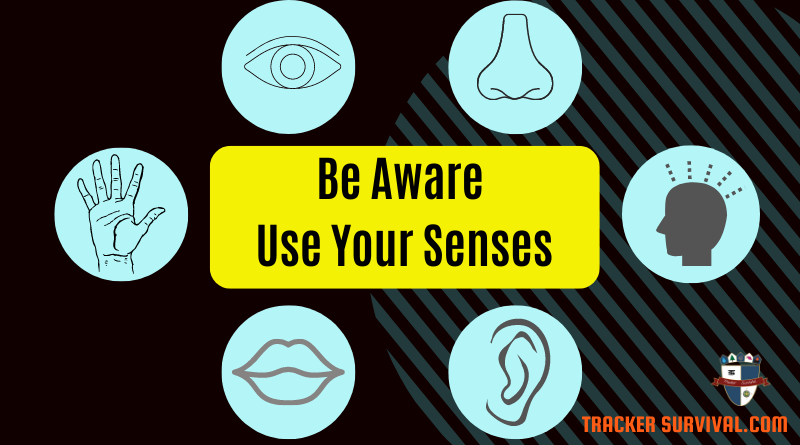How to Use a Compass
BEING LOST IN a normal situation can induce irritation, anxiety, and stress, however being lost when the SHTF usually results in pure panic.
Panic leads to bad decisions being made and that usually ends up making things worst. In some cases, they may even end up being fatal.
There are many sad tales of hikers stepping off the trail, getting turned around, and perishing a relatively short distance away from a trail leading to safety.
Now the solution is quite simple of course. Do NOT get lost. For centuries people have been using a compass to find their way. Everyone should learn how to use a compass and carry it with them in their EDC Survival Kit.
This nifty tool always points North and that information can be used to plot a course.
GPS Vs Compass
Most people have phones and rely on their phone’s GPS to get around in unfamiliar territory. Cars have GPS too, danged if most tablets don’t have them as well. Nowadays you can even find GPS systems on watches. But all GPS systems have a major disadvantage, they require power to work. And as with any device that requires power, the user is at the mercy of however many hours the battery lasts.
Now a compass is different, it does not require any power. All that is needed is a little bit of knowledge and practice using a compass. People have been navigating for centuries using just a compass.
By all means, get a GPS, and a smartphone, maybe even a smartwatch. They are all great devices. Just make sure that you also always have a good old-fashioned compass and map as backup.
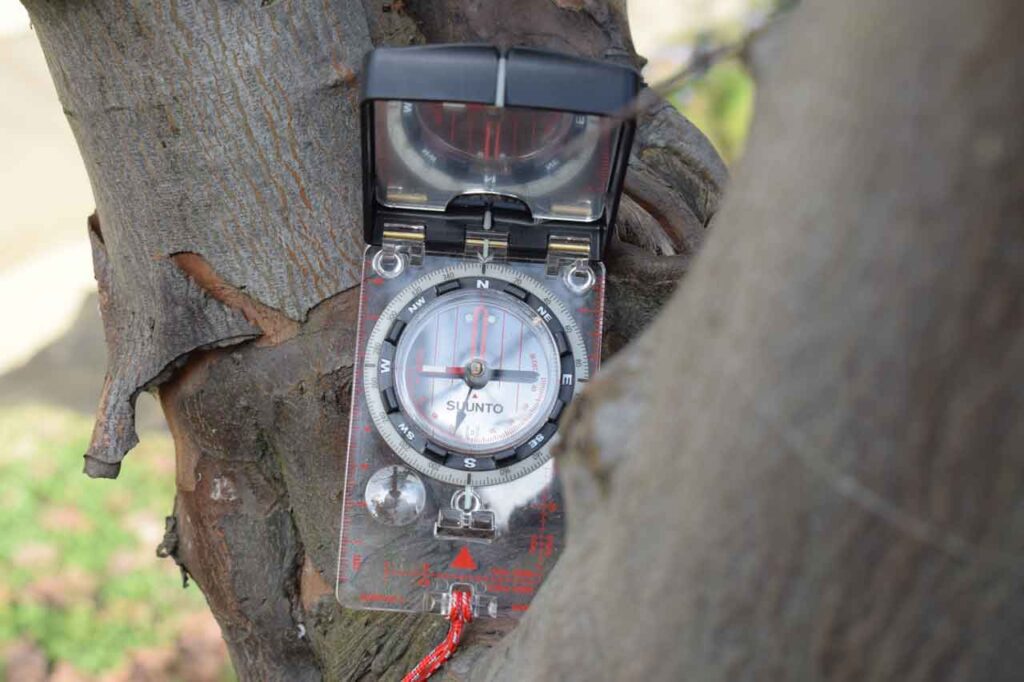
Compass
A compass is a device with a magnet needle used to navigate. The needle points in a northerly direction and by looking at the face of the compass the cardinal directions can be seen.
Compass Parts
In the past, a compass was a simple device, a little magnetic needle bobbing happily in a container of some form or other. But modern compasses have all sorts of nifty little add-ons for the user’s convenience to make navigating simpler.
Magnetic Needle
The little needle with the red end. The red part of the magnetic needle points to the Magnetic North, not to be mistaken with the Geographic (True) North.
Confused? Well don’t be, it’s quite simple. On maps and globes, there are longitude and latitude lines, the converge on top of a globe is true north. Now magnetic north is where the magnetic compass actually points. And that would be where the earth’s magnetic fields point into earth. And this point tends to drift a little every year.
Geographic (True) North
Is a fixed point on the map where all longitudinal lines meet. What all maps have marked as North.
Magnetic North
Is a general northerly direction where the earth’s magnetic field goes vertically down into the planet. The magnetic north is not a static point over time it moves.
Peep Sight
A peep sight is for precise sighting of an object or landmark.
Mirror
The mirror is used to read the reflection of the compass when using the “sight-bearing method” .
Center Line and Notch
The center line and notch are used to alight the target and compass. They align perfectly with the peep sight.
Orienteering Arrow
Align the Orienteering arrow with the magnetic needle to find the direct target.
Compass / Needle Housing
The container wherein the needle is housed.
Magnifying Glass
A built-in magnifying glass that makes reading maps easier.
Baseplate
Transparent base plates are flat pieces of plastic that the compass is embedded on. They have scales and straight edges on them that make working with a map much easier.
Compass Rotating Bezel
Used to get bearings, just be aware that bearings are relative. They depend on location. A bearing is an angle relative to the north that leads to a destination. Using a bearing is much more accurate.
Magnetic Declination
Used to adjust for magnetic declination, the difference between true north and magnetic north. Be aware that magnetic North moves a little every year. This means that you are using map legends to adjust for declination. Check the MAP date. On older maps, the declination will be different.
Orienteering Lines
Align the compass with the meridian lines on a map using the orienteering lines.
Bearing Indicator
A little line or notch to mark where the bearing is.
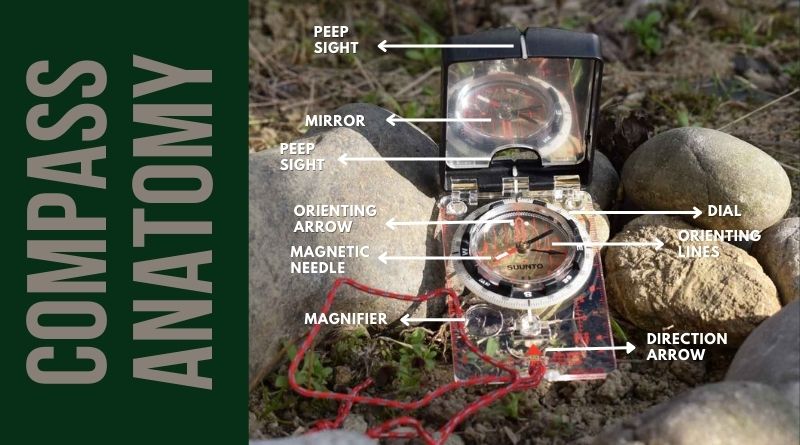
Modern Compasses
Modern compasses come with a whole slew of time-saving and nifty little things that make orienteering simpler. But basically, all an experienced compass user needs is the simplest compass, a needle that points north, and a faceplate that has the cardinal directions on it. Although having all the cool extra stuff is great.
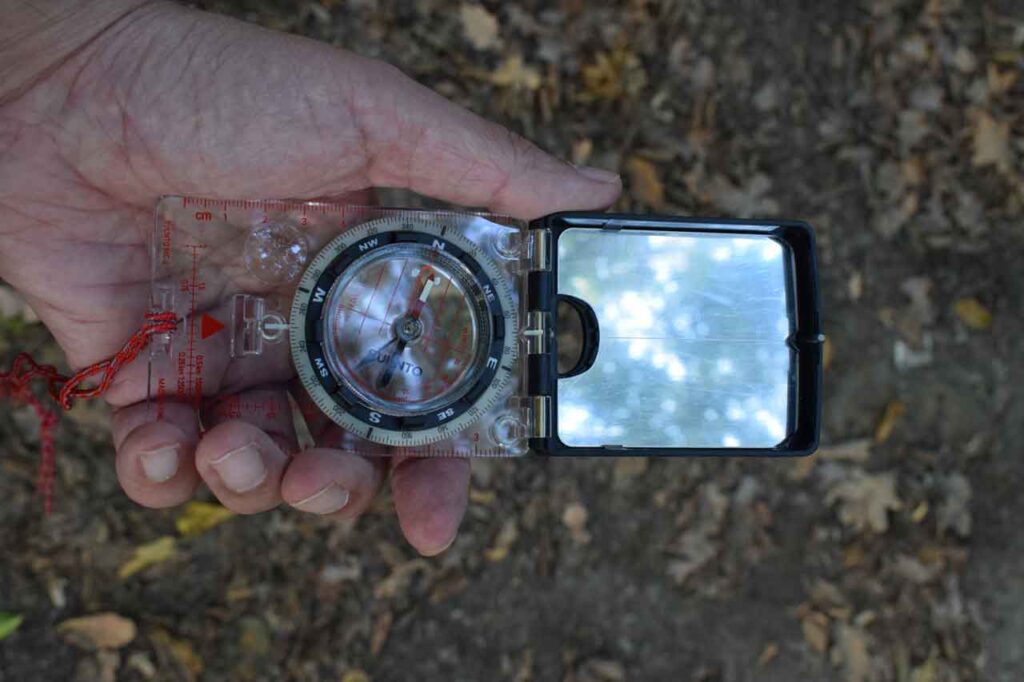
Best Book on How to Use a Compass
Owning a compass and not knowing how to use it, means the compass is useless.
This book will teach navigating with a compass in the easiest way possible. Click here
Best Survival Compass
There are a ton of great brands and models of compasses out there, Silvia, Brunton, Suunto, Cammenga, etc.
But without a doubt. The best survivalist, Bushcrafter, prepper, hiker, and camper compass is the Suunto Mc2
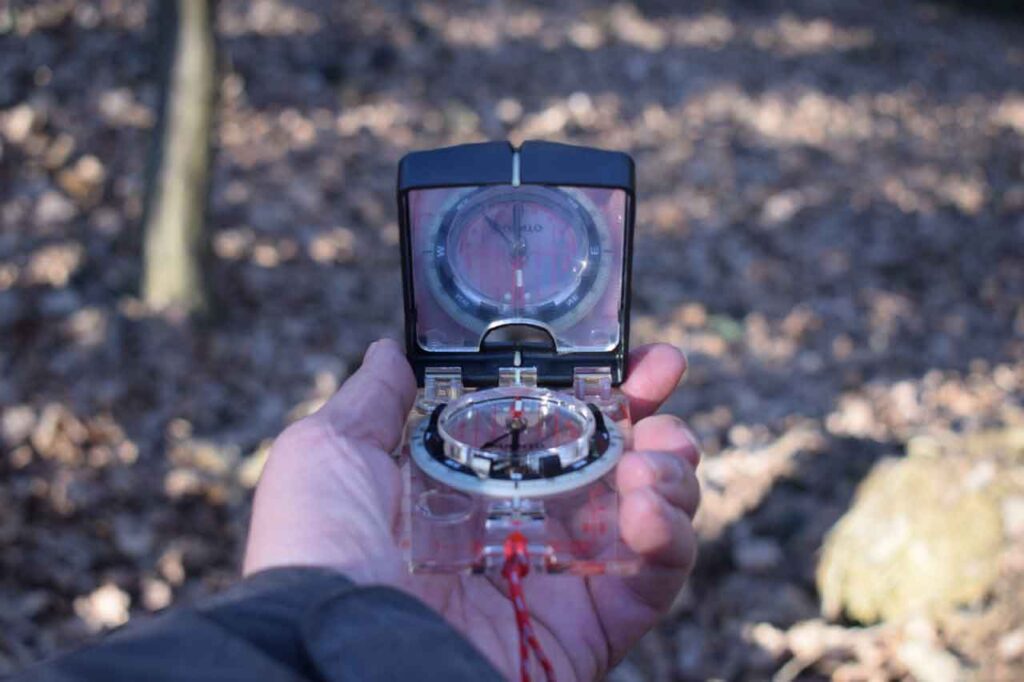
Suunto MC2 Global Review
The Suunto MC2 has all the bells and whistles that a modern compass has.
Sighting Mirror
A sighting mirror, makes navigating to a landmark easy. The compass mirror can also be used as a signal mirror in an emergency. Even though the mirror is a little bit small, it can be used to shave with in a pinch.
Extended Baseplate
Great for using on a map. Saves the hassle of all that pesky map folding to get straight lines. With the mirror fully opened and laid flat, the Suunto covers 7 inches of a map.
Large Clear Dial
A definite advantage for people like me whose eyes are not as young as they used to be.
Build In Clinometer
A useful tool for those who live in hilly terrain.
Adjustable Declination
This is a great feature that most high-end compasses have. While it is not essential it makes life a lot easier.
Scales
Makes estimating distance on a map easy.
Magnifying Glass
Most maps have tiny printing on them, a magnifying glass makes reading them easier. And while this isn’t the best magnifying glass on the market, it is usable.
In dire situations, the magnifying glass can also be used to start a fire and assist in removing small splinters or ticks that are hard to see.
Luminescent Markings
For use at dusk, dawn or low light conditions. I wish Suunto made a version of the MC2 with Tritium.
How To Use a Compass Without a Map
So this is a simplified explanation:
OK, I was going to write all this down step by step, but I found an easy to understand video on YouTube, by Corporals Corner.
For those who don’t want to watch the video. Here is an abbreviated version.
Open the compass enough that you can see the reflection of the magnetic needle in the mirror.
Hold the compass up to your eye, and look at where you want to go through the little peephole on the MC2. Turn the bezel until the magnetic needle is on top of the orienteering arrow.
This is commonly referred to as “Putting the dog in the dog house”. The dog is the needle and the dog house is the orienteering arrow.
Now at look at the compass bezel, the bearing indicator will show your bearing, and as long as you follow the bearing you will go where you want to.
